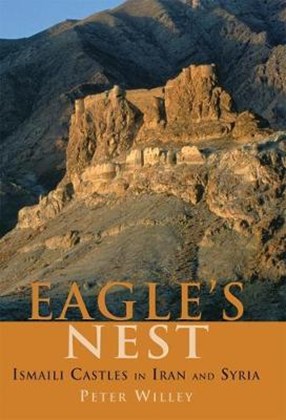Eagle’s Nest Ismaili Castles in Iran and Syria
I.B. Tauris in association with the Institute of Ismaili Studies
Towering Castles and forbidding fortresses built in the remote mountain regions of Iran and Syria are all that remain of the determined efforts of Ismaili Muslims to flee religious persecution in the Middle Ages. Inseparable from these castles and the communities they supported are startling legends about the so-called Assassins who swept down from their craggy fastnesses to target their enemies in daring, guerilla-style raids. Their one-time leader, Hasan Sabbah, became notorious in the medieval European imagination as the charismatic ‘Old Man of the Mountain’ He and his followers were demonised by the propaganda of the hostile Muslim majority – and by subsequent western embroidering – as terrorists and criminals. Peter Willey, who has made the Ismaili castles the subject of a lifetime's research, here uncovers the true stories behind the extraordinary legends and myth-making about these supposedly merciless mountain warriors.
Charting the discoveries he made during the course of more than twenty expeditions, over the last forty years, Willey shows that – in contrast to the lurid tales of ‘hashish-crazed assassins’ – the Ismailis were people of exceptional intelligence and sophistication, who in these remote mountain fortresses were able to cultivate a rich intellectual and spiritual life. When forced to retreat to their distant and secure strongholds by the campaigns of the Saljuq Turks, they created a remarkable Muslim culture of their own. They excelled at military architecture, agriculture and water engineering in arid and rocky terrain. A resilient community, the Ismailis held out, against the might of Saljuq military power, for over 100 years in the mountains of Iran and Syria until they were conquered by the Mongols in 1256. The very opposite of the ‘assassins’ of popular imagination, their architectural, intellectual, agricultural and military achievements in many respects surpass those of the Crusaders.
For anybody with an interest in medieval and Middle East history, or simply with a love of castles, Eagle’s Nest will be essential reading. Among many castles and fortresses, it describes the impressive and often inspiring sites of Alamut, Samiran and Qa’in (in Iran), and of Masyaf, Kahf and Khawabi (in Syria). The book is illustrated with numerous photographs, maps and plans. As well as offering a gripping historical account of the courage, vision and endurance of this Shi‘i Muslim community, it comprises an enthralling personal story of the challenges involved in rediscovering a forgotten, distant world, which will appeal to the armchair traveller and historian in equal measure.
List of Illustrations
Preface
1. Introduction: Early History of the Ismailis
Part I: The Rise and Fall of the Nizari Ismaili State
2. Hasan Sabbah and the Ismailis of Iran
3. Rashid al-Din Sinan and the Ismailis of Syria
4. Organisation and Ethos of the Ismaili State
5. The Mongol Conquest
Part II: The Castles of the Ismailis
6. The Strategy of Ismaili Castles
7. Castles of the Alamut Valley – I
8. Castles of the Alamut Vallety – II
9. The Mountain Fortresses of Qumes
10. Castles of the Qa’inat
11. The Fortified Province of Qohistan
12. Castles of Isfaha and Arrajan
13. Citadels of the Syrian Mountains – I
14. Citadels of the Syrian Mountains – II
15. Badakhshan and Hunza
16. Epilogue
Appendices
I. Research Expeditions led by the Author
II. List of Ismaili Castles and Fortifications
III. Ismaili Pottery from the Alamut Period (by Rosalind A. Wade Haddon)
IV. Ismaili Coins from the Alamut Period (by Hussein Hamdan and Aram Vardanyan)
Bibliography
Index
‘Maps and descriptions of the major sites are supplemented by superb colour photographs, so the reader is able to visualise, and almost feel, the castles.’
– Peter Clark, Asian Affairs
‘Numerous historical essays and archaeological reports...have provided a clear and accurate view of the Ismaʿilis within the Islamic tradition. But assuredly, the last release on the subject, Peter Willey’s Eagle's Nest: Ismaili Castles in Iran and Syria, provides invaluable new insights... I read it, I must say, with great pleasure.’
– Valerie Gonzalez, Bulletin of the Royal Institute for Interfaith Studies
Peter Willey is the world authority on the Ismaili castles of Iran and Syria, which he has spent nearly a lifetime discovering and investigating. He has written a number of books including The Castles of the Assassins (1963), which has been translated into Persian, contributed to Explorers Remember (1967) and to the Encyclopaedia Iranica on Ismaili monuments. He is a member of the Royal Society of Asian Affair, a Fellow of the Royal Geological Society and now lectures on the Middle East and Islamic Art at Bristol University.

